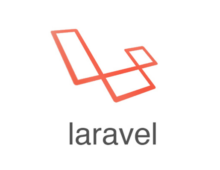Do you wish to increase the speed of your WordPress website? Do you think optimizing tricks can boost up the loading time to fasten your website? Here, in this post, we shall discuss in detail how to speed up the WordPress site.
Overview
If you’re developing a website on WordPress, then page speed is the major thing that one can’t ignore. In a survey last year, it was determined that 40% of the viewers abandons a website if it takes more than 3 seconds to load, this ultimately results in fewer page reviews, a decrease in customer satisfaction and loss in conversation with the users. So every millisecond is important for you!
Often people forget that the quality of internet service may also be corrupt. Don’t forget that the web is immense, and any number you see mentioned is an average, and any number you experience is a single sample of a hugely varied set. Apart from the additional benefits, it has a significant impact on SEO. The higher will be the speed of the website; better the rank will be on Google.
A faster loading website is the outcome of less processing, lesser data, and fewer request. This means that the computers that handle your website work less, reducing their heat output, which in turn means less cooling. This effect is not recognizable on a single server but would be measurable at scale.
How to Increase the Speed of your WordPress website
This is one of the major question asked by most of the WordPress Bloggers. It considered very crucial from SEO point of view. It doesn’t make sense to visit a slow loading website. It is, for this reason, people leave your website and search for some another. So here are some handy tips to increase the speed of your WordPress blog. Some of them will speed up your website considerably. Others may only make a fraction of seconds worth of difference to your page load times. If you have a highly informative website with hundreds of pages, and it takes a long time to load then you’ll want to squeeze every bit of optimization out of it.
General Speed Increase
1. Update Your Core Technologies
Generally, we do not focus on optimizing our PHP, but it is good people prefer to use updated version. However, it is suggested that you should rigorously update your PHP, if your host is too expensive. The lower end servers only update PHP when they are asked to. If you take a look at some PHP benchmarks, you can examine its importance. You may update your PHP version depending upon your host. If you search for “PHP Configuration” after logging on to your host, you may find a select box which permits the user to switch to different versions. But make sure there are some dangers before updating PHP. If you have stale code running, you may crash into unexpected issues.
2. Update Your CMS

Although CMS updating does not effect much from one version to the next and does not patch security issue. The scratches in your security may lead to malicious coding which injects into your website and makes thing inject into your website. Thus, CMS updates result in optimizing the system allowing better coding, which ultimately results in less crowding, faster queries, speed translation to increase average over time. But do not expect a speed of 4.2 to 4.3 in a month time. You can expect a diligent growth in a longer time duration.
3. Lessen the Requests
There are things which make things better. You can first find out how many how many requests your site is making the use of tools. You can see all requests in your browser’s developer tools, or you can use a webbased tool. You can take advantage of tools by figuring out the number of tools or the webbased tool like Pingdom.
While adding content to your site, you may increase request to add images. One can be entertained with one request per items. If you add galleries to your post and the first five images are displayed on your archive pages, then you could be viewing at as many as 6070 requests on a single page. So consider back on the plugins. They may give their styles and scripts and will save your request at your initial level of separation.
Here are some quick tips:
- Decrease your posts per page settings to 8 or 6.
- Cut on to your plugins which affect the frontend of the website.
- Switch up to the different theme.
- Use Ajax for smooth loading of search results of your website.
- You may also use powerful tools like Lazy loading images which make your site seem working faster.
4. Remove Unnecessary and Wasteful Plugins
Try deactivating inactive plugins. This will only cause you problems. At the end of the day, plugins are nothing but pieces of code that help perform functions. Sometimes they become unmanageable and counterproductive.
5. Remove Unnecessary EyeCandy
There are many design elements and modules which are just for appearance and is of no use. So try to look for elements which are meaningful for your website Eliminate the useless ones. Just removing your slider may lead to lower conversion rates, but maybe replacing it with simple text and links would increase it way above the level of the slider’s effect.
6. Make use of Content Delivery Network

Content Delivery Network (CDN) is a place requested resources geographically closer to you. It signifies that you can access your site from anywhere you might receive images from a data center within the state. Using CND helps to do everything a lot simpler and faster. They permit to host image faster offserver and decrease image loading time.
7. Enable Caching
It is one of the best methods because it results into most amazing results. The idea behind using can be understood with a simple analogy. When you were the initial learner at school, we used to add any digits on our figures. Nowadays, everybody can tell the figure in a fraction of seconds. Your brain automatically catches up the result. Now in the case of websites, the equation is not always the same! The catching usually saves an HTML copy of the website for a given time. It is found that better caching can be achieved on the server level.
8. Optimize Your Database
Data used can come from various places. They acquire some dead weight, which is unavoidable. They can be of two types: Unused data and Databaselevel overhead. Unused data can be easily cleaned, but databaselevel overhead can be cleaned using a tool built into MySQL. It is similar to disk defragmentation for hard drives.
9. Reduce Image Sizes
Reducing of your WordPress images helps to maintain your site loading times. Bulky image occupies more space on your wpcontent folder. There are several plugins with which one can compress the images. WP Smush Pro is best amongst them and is used by over 200,000 WordPress installations. One can also use Photoshop, Imageoptim for OS X and RIOT on Windows.
10. Disable Hotlinking
Hotlinking is nothing but a point when an image is served on a different website from your server. Disabling the hotlink can directly speed up the website. But it catches load on to your site when you have any popular website. So, to avoid hotlinking from your site’s content, you may refer codes which you can add to your server. They usually target images and other multimedia which are data heavy.
11. Choose a Good Host
Selecting a good host is an art. But never used shared hosting, unless you don’t have any option, or you’ve multiple sites, and you don’t really use all of them. Of course, ignore getting a dedicated host server for your website because you will totally get confused if you’re an infrequent user of your website. Dedicated servers are usually for those who have excellent command on server technologies or for websites with extremely high usage. So, it is recommended to use VSP, which will cost somewhere around $25 – $50 a month. They are more capable than lowend dedicated servers and can fetch a pretty good deal here. Managed WordPress hosting is another great option for users. It offers a WordPress centric approach.
12. Monitor your Website
This will obviously not increase the speed of your website, but help to get the alert if there is anything wrong. Reacting or taking preventive measures before any issue is noticed is an accurate way to retain customers happily.
DevelopmentRelated Speed Increases
1. Minify Files
Avoid using heavy weighted files. It destroys the speed of your website. Once you’re completed with the final files, you should start compressing, before it’s too late. You may use Gulp or Grunt tool, for the same.
2. Load Scripts in the Footer
Make sure to use a script in the header, if you do not use a script in the header. It will increase the speed of your WordPress website. It doesn’t decrease requests or file sizes but ensures to load the content first.
3. Prioritize Content
You should also prioritize the content. Avoid nonessential content to display later if your sidebar contains related info too. This is not always possible, but you should display important content first.
4. Image Size
You should specify the size of the image while outputting image in WordPress. Very often people understand how big the image is required, whether it should be featured, small post icons, avatars, etc. WordPress creates the copy of the image, whenever any image is uploaded. The idea is that we should grab an idea of exact image size.
Conclusion
Always keep in mind the goal of your website. If your site aims are the intelligent balance of multiple tools, then website speed is just one tool. So, if you implement a handful of techniques outlined in this post, you may notice an immediate and dramatic improvement in your website performance. It is not necessary everything works from database calls to HTTP requests, but it is important to work towards them on our websites.


